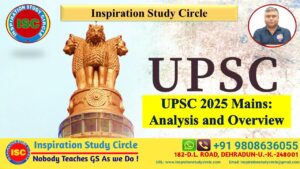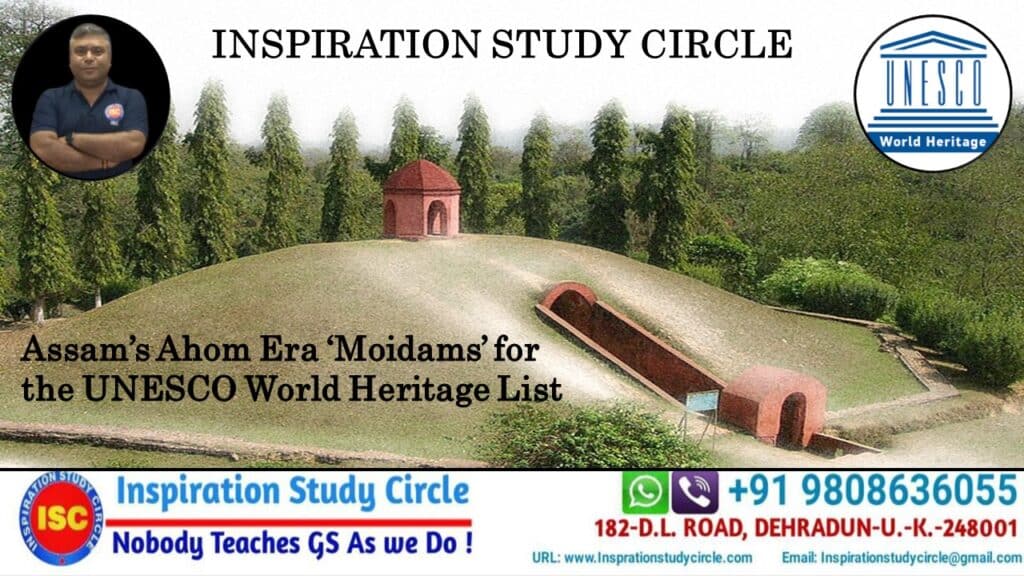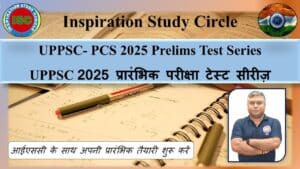
UPSC Mains 2025 Analysis and Overview
UPSC Mains 2025 Analysis and Overview Table of Contents The UPSC Mains 2025 analysis indicated a paper that was a balance of static and analytical questions,
Assam’s Ahom era Moidams, the resting place of royal families, in Assam’s Charaideo district are to be considered for the World Heritage List. The nomination dossier for the Moidams was sent more than a decade ago and is presently on the tentative list of UNESCO World Heritage Sites, which is the first step towards the monument becoming a part of the final list.
The 700-year-old mound-burial system of the Ahom dynasty — the Moidams from Assam — will be considered for nomination on the World Heritage List during the 46th session of the World Heritage Committee (WHC) in New Delhi. If the nomination comes through, it will become the first cultural site on the prestigious list from the northeastern region.
Prime Minister Narendra Modi will inaugurate the 46th session of WHC, which is being held in India for the first time. The event, to be held at Bharat Mandapam from July 21 to 31, brings together culture ministers, representatives, and stakeholders worldwide to discuss the preservation of shared cultural, natural, and mixed heritage.
It is among 28 sites proposed for inscription on the List, to be examined according to categories: natural, mixed, and cultural.
Besides, the committee will also discuss the state of conservation of the 124 sites already inscribed on the World Heritage List, 57 of which are also on the list of World Heritage in Danger. To date, the World Heritage Committee has inscribed 1,199 sites in 168 countries on the list. India has 44 of its sites on the list.

The International Council on Monuments and Sites (ICOMOS), the advisory body of UNESCO, has recommended ‘Moidams’ to be included in the world heritage list for its exceptional and unique cultural tradition and architectural or technological ensemble or landscape.
The International Council on Monuments and Sites (ICOMOS) has prepared a report ‘Evaluations of Nominations of Cultural and Mixed Properties’ for the 46th ordinary session of the World Heritage Committee, to be held in New Delhi on July 21-31.
France-based ICOMOS, also an advisory body to UNESCO for cultural heritage, is an international non-governmental organisation that is comprised of professionals, experts, representatives from local authorities, companies and heritage organisations, and is dedicated to the conservation and enhancement of the architectural and landscape heritage throughout the world.
ICOMOS recommends that Moidams — the Mound-Burial System of the Ahom Dynasty, India, be inscribed on the World Heritage List on the basis of a criteria.
With this recommendation, the first-time applicant Moidams are just one step short of formally entering the World Heritage List by the United Nations Educational, Scientific and Cultural Organization (UNESCO). These were first included in the Tentative List in April 2014.
Inclusion of Moidams in the World Heritage List was sought by the Indian government on the basis of Cultural Criteria (iii), (iv) and (v). The nominated property has an area of 95.02 hectares and a buffer zone of 754.511 hectares.
Criterion (iii) bears a unique or at least exceptional testimony to a cultural tradition or to a civilization which is living or which has disappeared and criterion (iv) is for an outstanding example of a type of building, architectural or technological ensemble or landscape which illustrates significant stages in human history.
The criterion (v), which ICOMOS rejected, is for an outstanding example of a traditional human settlement, land use, or sea-use which is representative of a culture or human interaction with the environment, especially when it has become vulnerable under the impact of irreversible change.
The report stated that 90 Moidams are found within the Charaideo necropolis, situated on elevated land. These were created by building an earth mound over a hollow vault constructed of brick, stone, or earth, and topped by a shrine at the centre of an octagonal wall.
The Moidams situated in Charaideo are the burial grounds of Ahom kings and queens. These are comparable to the pyramids of Egypt and substances of wonder seen through the brilliant architecture and expertise of the artsmen and masons of Assam of the medieval era. These maidams situated in Charaideo make the district an attractive tourist destination. The district also boasts of ancient ruins and relics which add to its crowning glory.
Chaolung Sukaphaa, a Shan (Tai) prince from Mong Mao in Yunan of southern China who came to Assam after crossing the Patkai Mountains via Myanmar and established the Ahom kingdom in 1228, kings, queens and royal family members were buried at Charaideo, the first Ahom capital located around 28 km from Sivasagar.
Of the 386 ‘Moidams’ explored so far, 39 are believed to be of Ahom kings who ruled Assam for nearly 600 years till the Burmese invasion of the region and subsequent annexation by the British East India Company after signing of the Treaty of Yandaboo in 1826. Of all the Moidams, nearly 90 have been preserved well and are the best representations of the burial system sometimes referred to as the ‘Pyramids of Assam’.
A Moidam (also spelt Maidam) is a tumulus —a mound of earth or stones over a grave. While the moidams at Charaideo housed graves of the Ahom royals, there is a record that even other Ahoms, including soldiers used to get buried in moidams of smaller dimensions. They are spread across the region where Ahoms ruled in Assam.
The site is jointly managed by two separate entities —Archaeological Survey of India (ASI) and the Assam Government’s Directorate of Archaeology (DoA). All matters affecting the prohibited and regulated zones are approved by the joint management.
Birendra Kumar Gohain, who has written several books on the Ahoms and is considered an authority on the dynasty and their traditions, said that the UNESCO tag will lead to better conservation efforts of the historically and architecturally important ‘Moidams’.
The Ahoms were great record keepers and details of their history are found in ‘buranjis’, which chronicled their rule and important events. The practice of burying the deceased in Moidams, which in Tai language means ‘place where the dead are worshipped’, started in Assam’s Charaideo with Sukaphaa also finds mention in one such ‘buranji’. It is mentioned that after Sukapha’s death, his eldest son made the king’s ‘Moidam’ on the foothills of Charaideo hills and prayed to the gods. This is clearly written in ‘buranji’ and is the only evidence that the first Ahom king was buried in Charaideo.
While the practice was new to Assam, it is believed to have been a continuation of the tradition the Shans followed in regions of China and Myanmar where they lived. The act of burial at Moidams, which started with Sukaphaa, continued for the next six centuries and all Ahom kings, their queens and family members continued to be buried in the mound-shaped burial grounds.
The practice of building a mausoleum for the dead king was part of the practice followed by Shans in Mong Mao and they continued it after coming to Assam. This can be known as Moidams were constructed right after Sukapha’s death. So, we can say that it was part of their tradition and not something new which they did after arriving in Assam.
During the course of their 600-year rule, the Ahoms gradually gave up their language and religion, but some of their rituals, including the practice of constructing Moidams and the wedding practices continued as per their old tradition.
Though the Moidams, which are shaped like a hemisphere covered in grass with an octagonal structure on top, were sealed after putting the body of the king and other royals, there was an officer who was appointed to take care of their maintenance and beautification.
While the Ahom capital shifted later to other places, kings, queens, and other royals continued to be buried in Moidams at Charaideo. During their rule, a few later kings took to Hinduism. But even those kings had their Moidams at Charaideo with ashes from their cremation (as per Hindu practice) buried according to Tai rituals.
The Moidams were elaborate structures which had a foundation of stones and had several layers with chambers holding all things, including food that the king or other royals would require in their afterlife. There were specific measurements for the size, shape, and other requirements. Details of the same are found in a ‘buranji’ of Changlung Phukan, a chief engineer during Ahom rule.
Apart from things of daily use and clothing of the kings and queens, they also contained treasures in the form of gold, silver, coins, ornaments, and other valuables, which were buried in the Moidams.
At present, there are no world heritage sites in the cultural category in northeast India, and if the Charaideo Maidoms get the UNESCO nod, it will be the first such kind in the category.
“The world heritage tag, if it comes, will be a big moment for Assam. Tourists from other parts of India and abroad, who come to Assam, visit either Kaziranga or Kamakhya, a sacred Hindu temple located in Guwahati. But they aren’t aware of Assam’s history or the Ahom dynasty. The UNESCO tag will hopefully change that,” said Arup Kumar Dutta, author of ‘The Ahoms: A Reimagined History’.
At present, there are two UNESCO World Heritage sites in Assam — the Kaziranga National Park, which is home to the world’s largest habitat of the endangered one-horned rhinos, and the Manas National Park, a biodiversity hotspot located on the border with Bhutan that has “spectacular scenery and natural landscape”.
Related posts:-

UPSC Mains 2025 Analysis and Overview Table of Contents The UPSC Mains 2025 analysis indicated a paper that was a balance of static and analytical questions,

Last Minute Preparation Tips for UP PCS Prelims 2025 Table of Contents The Uttar Pradesh Public Service Commission conducts a series of annual examinations for

Explained: Next-Gen GST Overhaul and Reforms Table of Contents The GST Council in its 56th meeting on 3rd September, 2025, made the recommendations relating to changes in

Explained: Vikram-32 Chip Table of Contents Union Information and Broadcasting Minister Ashwini Vaishnaw recently unveiled India’s first indigenously developed 32-bit processor called VIKRAM-32. The minister presented the

UPSC Prelims 2026 Test Series Table of Contents Inspiration Study CircleUPSC Prelims 2026 Test Series The Union Public Service Commission (UPSC) is set to conduct

UPPSC- PCS 2025 Prelims Test Series UPPSC 2025 प्रारंभिक परीक्षा टेस्ट सीरीज़ उत्तर प्रदेश लोक सिविल सेवा 12 अक्टूबर 2025 को अपनी उच्च और संयुक्त